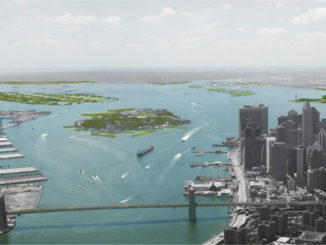
Image Courtesy of Chicago Lakeside Development/McCaffery Interests
LakeSim is a collaboration between University of Chicago, Argonne National Laboratory, the Computation Institute, Skidmore, Owings & Merrill and McCaffery to develop a prototype computational framework for Chicago Lakeside development. Planning for Chicago Lakeside will necessitate augmenting traditional tools with data and scientific computation, allowing developers to model the complex interplay between energy, waste and water infrastructures.
Rapid urbanization around the world is leading to the construction of real estate developments at a scale and pace far beyond human experience. Among these efforts is Chicago Lakeside Development, a 600-acre development on the coast of Lake Michigan on the city’s South Side that will eventually be home to 50,000 people and millions of square feet of retail, commercial and public space.
“Urban designers, architects, and developers have ample experience and tools optimized for single buildings or developments in the 20 to 30 acre range. But these do not scale to the 600 acres of a site such as Chicago Lakeside,” said Charlie Catlett, director of the Urban Center for Computation and Data and co-investigator on the LakeSim project. “The need to deliver sustainable and financially viable urban plans requires a science-based approach, bringing the power of computational models to city design.”
LakeSim will connect existing urban design tools with scientific computer models to create detailed simulations relevant to large-scale development. Instead of planning separately for different pieces of the infrastructure, the framework will allow developers to simulate how various designs influence the environment, transportation, and business spheres in Chicago Lakeside under a range of possible scenarios, over hundreds of acres and decades of time.
Image Courtesy of Chicago Lakeside Development/McCaffery Interests
More Information
Chicago Lakeside Development is a joint venture between U.S. Steel Corporation and McCaffery Interests, Inc. Chicago Lakeside Development is a global initiative for innovative living, with a strong focus on sustainable land development and community involvement. The development itself is a master-planned, nearly 600-acre mixed-use community located on the former U.S. Steel South Works site on the southeast lakefront in Chicago. The master plan is designed by Skidmore, Owings and Merrill in conjunction with Sasaki Associates and Antunovich Associates.



